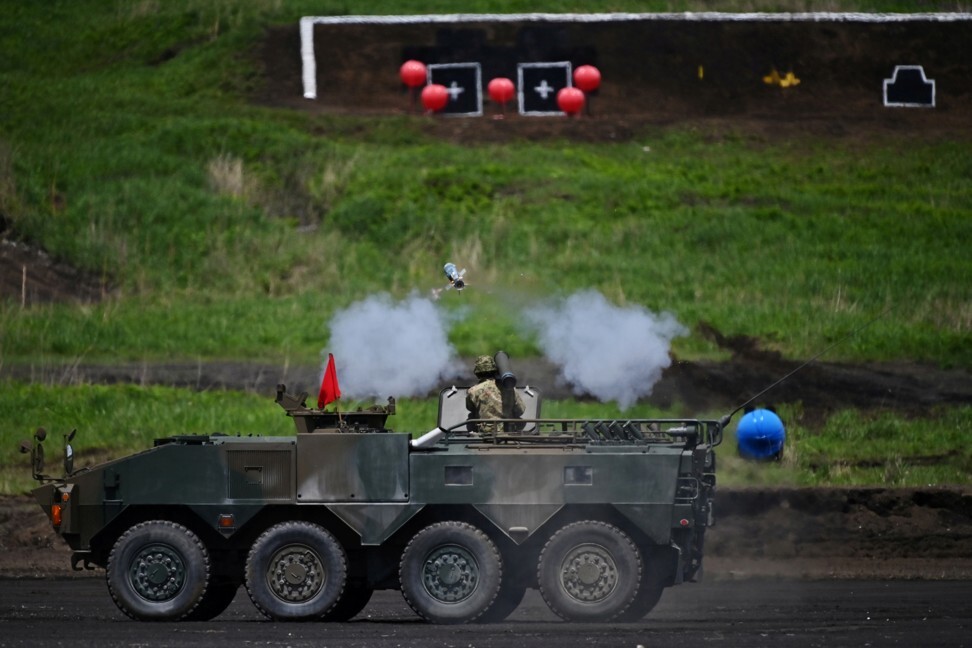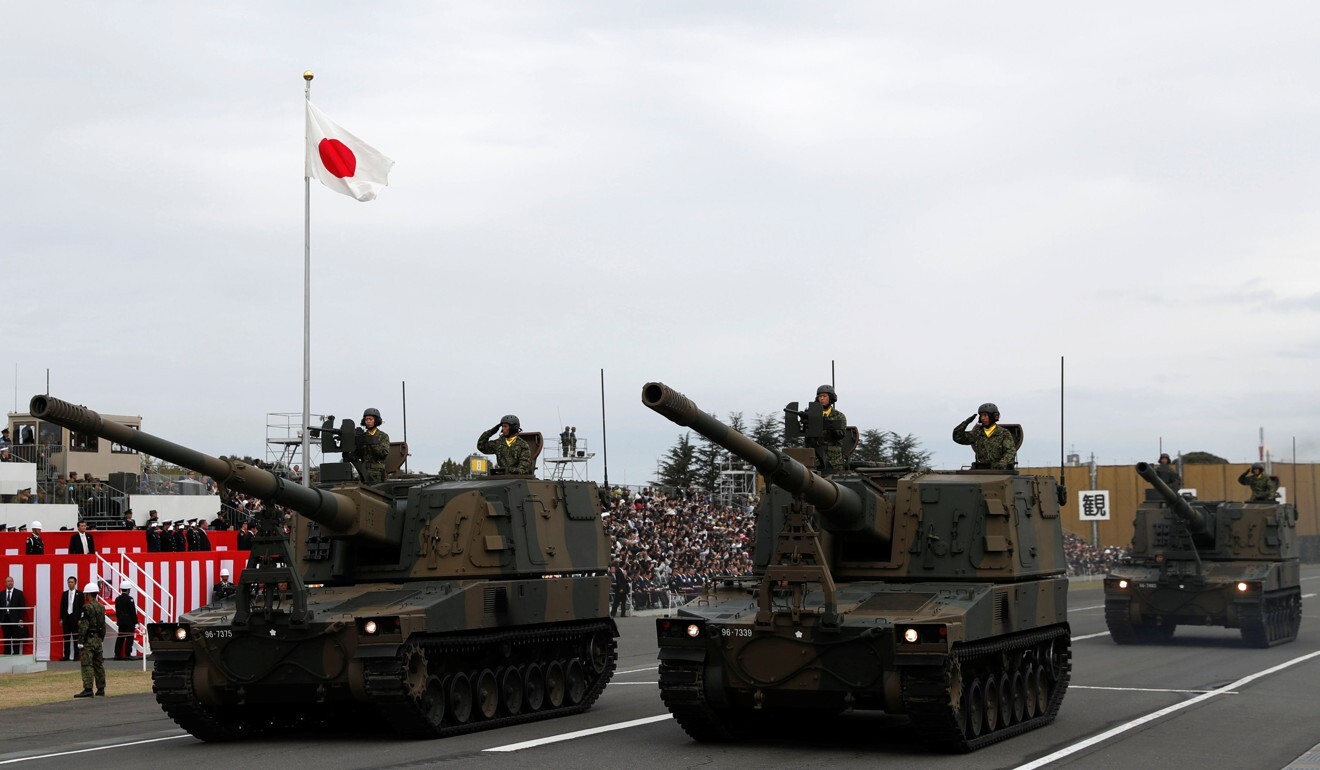
Japan sends message to China, US with largest military drill in 30 years
- As part of the exercise, personnel and vehicles will be moved to the country’s southwest, where areas such as the Diaoyu Islands are seen as at risk of attack
- Analysts say this will give Japan some much-needed logistical experience, while signalling to rival Beijing and ally Washington that it is ready to protect itself

Japan’s largest military drill in nearly 30 years is primarily an exercise in transporting heavy weapons and materiel to the country’s southwest, regarded as the most likely site of a clash with a neighbouring nation, in what analysts say is a much-needed logistical exercise as well as a message to China and the United States.
The Japan Ground Self-Defence Force (GSDF) exercise began on Wednesday and will involve units across the country until the end of November – including some 100,000 personnel, 20,000 surface vehicles, and 120 aircraft from all three branches of the Japanese military, as well as American forces including a US Army landing ship.
The last time Japan carried out such expansive manoeuvres was in 1993, after the end of the Cold War.
A key element of the drill is the relocation of 12,000 personnel and 3,900 vehicles from Hokkaido in the far north, the Tohoku region of northeastern Japan, and Shikoku in the country’s west. These are headed for Kyushu, in the far southwest.
The GSDF has traditionally based the vast majority of its tanks and land-based artillery in the north to deter an attack from Russia or its Cold War predecessor, the Soviet Union. Security needs have changed significantly in recent years, however, and there is a widespread recognition that Japan’s remote islands – particularly those off Okinawa in the southwest – are most at risk of attack.
Tokyo sees the most immediate threat as being to the uninhabited Diaoyu Islands, which it calls the Senkakus, and are also claimed by mainland China and Taiwan.
Given that Japanese forces had not been deployed overseas since the end of World War II, the Self-Defence Forces have relatively limited experience in large-scale logistics and transport operations, said Robert R. Eldridge, founder and president of The Eldridge Think Tank and a director of the Hawaii-based Global Risk Mitigation Foundation.
“Japan has always been weak on logistics because they have never been really tested,” he said. “They need to develop the capability to deploy internally quite quickly because without logistical support, a military has nothing.”
Eldridge, a former political adviser to the US Marine Corps in Japan, pointed out that the Japanese military had some catching up to do in its training because “it is very unrealistic”.
“In the Marine Corps, for example, training is made to be as chaotic as possible because that is how it is in the real world,” he said. “Japanese military training, on the other hand, is pretty much scripted and not at all realistic, so they would benefit from more joint operations with the US and other nations’ forces and to have more challenges thrown in.”
According to Japan’s defence ministry, the personnel and equipment will be transported using ferries, trains, and on-road transporters, the same methods that would be used if a conflict broke out.

While the terrain of Okinawa is not considered suitable for heavy tanks, the deployment of large numbers of fighting vehicles in Kyushu will serve as a “front line” for offensive operations against an intruder, said a China expert at the National Institute of Defence Studies in Tokyo.
Japan’s major concern is some kind of military aggression against territories in the southwest of the country, such as Okinawa prefecture and the Senkaku islands,” said the analyst, who declined to be named. “These exercises are designed to practice the mobilisation of units from other parts of the country [and] show Japan’s resolve to resist and fight any aggressor against Japanese soil, and it’s clear that the main target of that message in the southwest islands is China.”
China’s nationalistic tabloid Global Times on Wednesday ran an extended story on the first day of the exercise, claiming the drills were intended to challenge Beijing militarily and that “right-wing political forces in Japan have been lying” about the sovereignty of Taiwan and the Diaoyus to win public support.
Eldridge, the former US Marine adviser, believes the drills are also designed to send a message to Japan’s most important ally.
“Obviously China will be watching closely, but I do think this is also directed at the doubters in Washington and the message is that Japan is willing to do what is needed to protect itself,” he said.